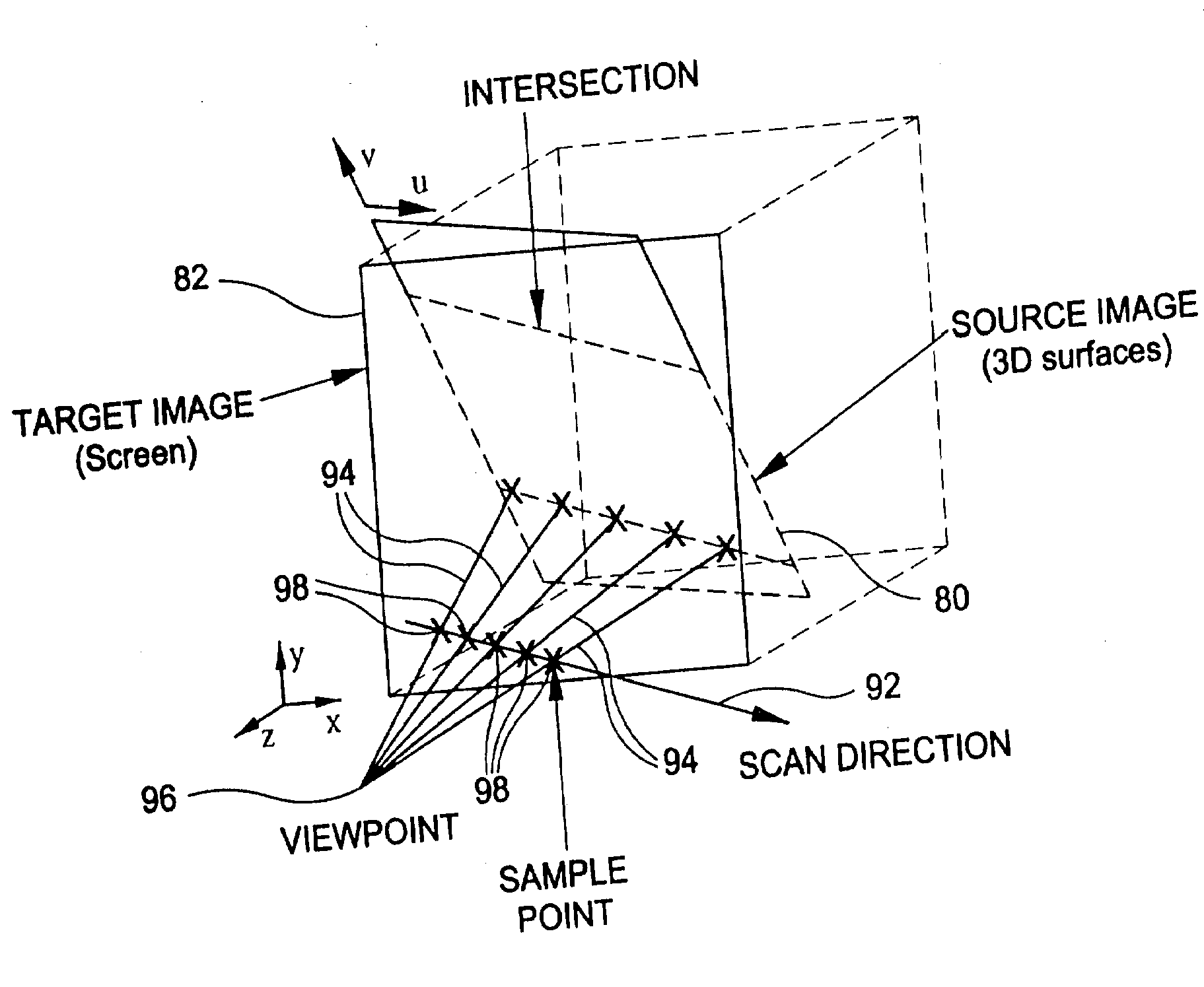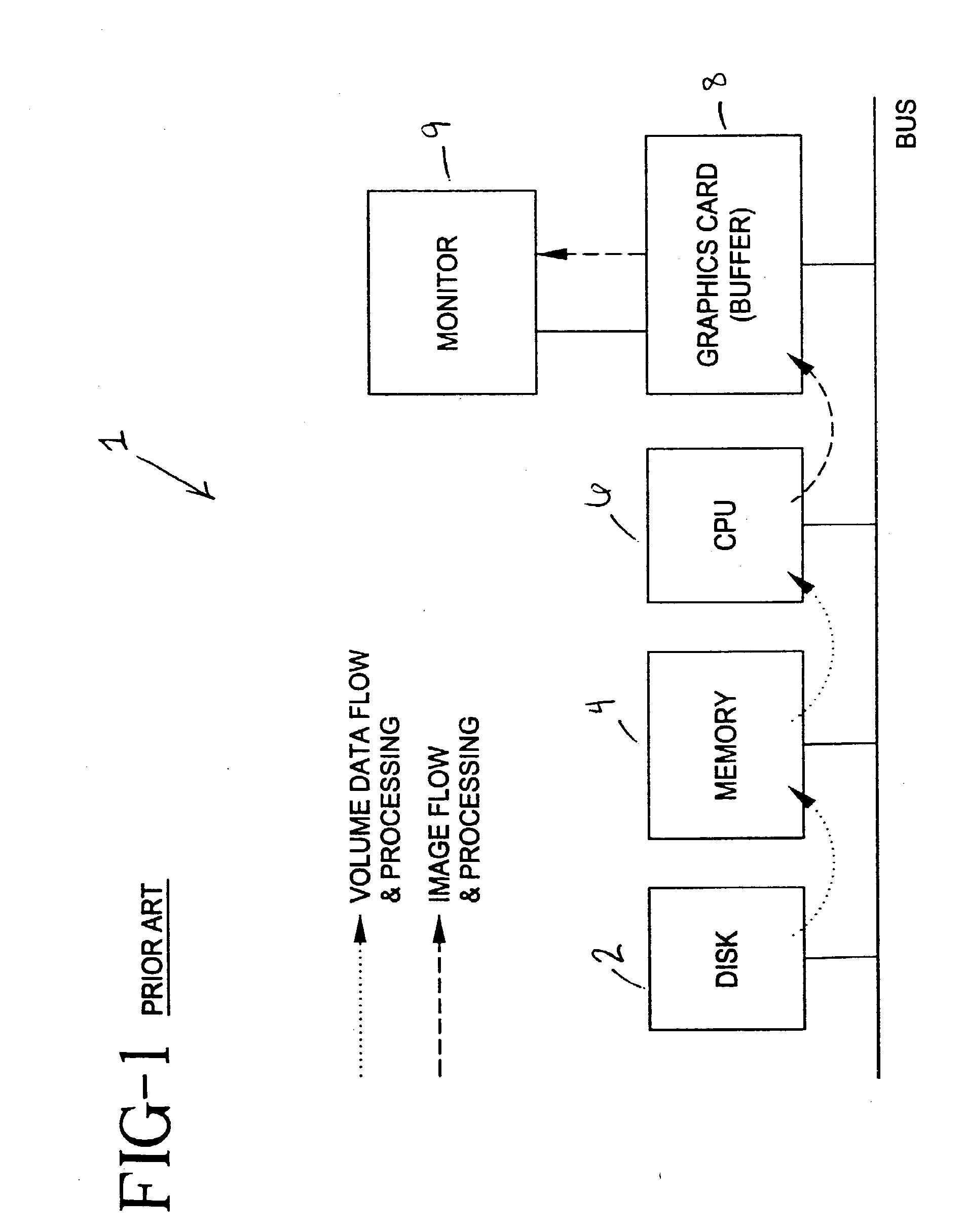Apparatus and Method for Real-Time Volume Processing and Universal Three-Dimensional Rendering
a technology of volume processing and volume, applied in the field of three-dimensional (3d) graphics and volume visualization, can solve the problems of increasing the rendering time or reducing the projected image quality, affecting the performance of the system, and only approximating the shape of the triangle facets of objects, etc., to achieve the effect of improving the gradient calculation, improving the image rendering quality, and improving the system flexibility
- Summary
- Abstract
- Description
- Claims
- Application Information
AI Technical Summary
Benefits of technology
Problems solved by technology
Method used
Image
Examples
Embodiment Construction
[0121] The apparatus and methods of the present invention are capable of processing data and supporting real-time visualization of high resolution voxel-based data sets. The present invention is a universal three-dimensional (3D) rendering system delivering enhanced volume rendering in addition to the integration of imagery (e.g., volumes, textures and images) with geometry (e.g., polygons). The apparatus and methods are designed for use as a voxel-based system as described in the issued patents and pending applications of Dr. Arie Kaufman, a named inventor in this application, including “Method of Converting Continuous Three-Dimensional Geometrical Representations Into Discrete Three-Dimensional Voxel-Based Representations Within a Three-Dimensional Voxel-Based System”, which issued on Aug. 6, 1991, as U.S. Pat. No. 5,038,302; “method of Converting Continuous Three-Dimensional Geometrical Representations of Polygonal Objects Into Discrete Three-Dimensional Voxel-Based Representatio...
PUM
 Login to View More
Login to View More Abstract
Description
Claims
Application Information
 Login to View More
Login to View More - R&D
- Intellectual Property
- Life Sciences
- Materials
- Tech Scout
- Unparalleled Data Quality
- Higher Quality Content
- 60% Fewer Hallucinations
Browse by: Latest US Patents, China's latest patents, Technical Efficacy Thesaurus, Application Domain, Technology Topic, Popular Technical Reports.
© 2025 PatSnap. All rights reserved.Legal|Privacy policy|Modern Slavery Act Transparency Statement|Sitemap|About US| Contact US: help@patsnap.com



